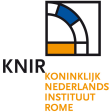Summary
- This field survey around the ancient Messapian town of Oria is part of the umbrella Brindisino project (Yntema 1993, 8) and the Salento Isthmus project (Attema et al. 2010, 67-68) conducted by the ACVU in the Brindisino plain land system. This survey aimed to study the integration of pre-Roman population of the Brindisi area into the Roman world (Romanisation debate). The survey strategy adopted aimed to recover sites by mapping artefact scatters. A relatively dense pattern of rural sites was detected, also for the pre-Roman phase (with different phases of settlement expansion and landscape infills), which decreases drastically during the late Imperial phase probably due to the concentration of landholdings. Of particular interest is the dense pattern of material scatters dated to the early Hellenistic period (late 4th- mid. 3rd century BC), which seems to comply with wider Italic or Mediterranean rural infill phenomena attested also elsewhere. Three types of early Hellenistic rural sites were identified: isolated farmsteads (30), hamlets (3) and small graveyards (14). It was assessed that the nucleated site of Oria expanded in size remarkably from c. 40-50 ha in the Archaic/Classical period to over 100 ha in the early Hellenistic period.
Project Dates
- 1981 - 1983
Periods
- No period data has been added yet
- 1800 BC
- 1000 BC
- 600 AD
- Intensive, systematic field-by-field survey that totally covered all accessible zones in an area of 5 km around present-day Oria (in total 62.4 sq. km were covered). The territory of Oria was chosen for three reasons: it contained all the different soil types (except the coastal marshes) that characterise the Brindisino landscape, 2. a large territorial portion was under cultivation (good surface visibility expected), 3. erosion and other major natural and man-made changes did not affect drastically the soil texture. This survey was diachronic in nature and aimed at documenting even diffuse scatters of pre- protohistoric wares. The Oria survey uses the terms ‘scatter’ and ‘site’. In the present research the term ‘scatter’ indicates a clustering of artefacts on the surface with definable limits that stands out against the overall artefact density in the remaining survey area. The term ‘site’ is a close relative and an extension of the term ‘scatter’, in the sense that they basically indicate the same entity (i.e. artefact concentration on the surface) but a scatter can be assigned the site status only if: a) it contains evidence of more than a single occurrence of human activity and b) the maximum artefact density within the scatter (highest number of more-or-less contemporary artefacts per square meter) is particularly higher than the overall density of more or less contemporary artefacts within the study area. A total of 96 sites/scatters were recorded. For the scatters containing artefacts dating to before the 16th century AD, a second visit was conducted by the experienced team members to trace the precise limits of the scatters, assess the maximum artefact density, assess the representativeness of the finds picked up by the survey team, interview the local farmer, and find out whether the archaeological deposits could be traced by means of augering. The maps used for the field survey were those of the IGM (1:25,000) and other 10,000-scale maps. The whole survey area was randomly divided into 30 sectors and present-day country roads served as delineations for these sectors. Each sector was systematically walked in all its accessible areas: the survey team consisted of 6 or 7 persons (including at least two members of the staff) and the space between field walkers depended on the type of cultivation (5 m in low visibility conditions, 7 meters in medium visibility conditions, 10 m in good visibility conditions). The distorting effects of biases on the overall view of settlement patterns was also taking into account by means of geophysical research, especially the role played by soil erosion, silting-up and recent human activities in delating or obscuring survey data.
Other Comments
- Director: Prof. dr. D.G. Yntema. Other team members: Prof. Dr. J.S Boersma, VU Amsterdam ................................................................................................................................ This record has been produced by the Fasti Online Survey team within the framework of the KNIR student internship 2020 'Digital Field Survey Archaeology'.
- Assess and trace changes in settlement patterns, land use and town-countryside relations in the Brindisino territory from the earliest Bronze Age down to the end of the classical period. What were the consequences of the incorporation of the Brindisino into the Roman state for land use, rural settlement patterns, and town-countryside relations? Did the Roman occupation (272-244 BC) and Hannibal's 'devastations' (217-207 BC) really cause a decisive break with the pre-Roman situation?
Director
-
Director
- Douwe Geert Yntema




![Edit [ed]](/survey/skins/fastisur/images/plusminus/edit.png)
![View [view]](/survey/skins/fastisur/images/plusminus/view.png)